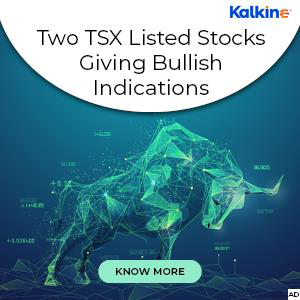Highlights:
- Canada Goose Holdings operates in the luxury apparel sector, offering performance-oriented clothing for men, women, and children across global markets.
- The company has a market capitalization of C$657.60 million, with notable financial metrics including a PE ratio of 26.15 and a debt-to-equity ratio of 232.50.
- Canada Goose's product offerings are sold through Direct-to-Consumer, Wholesale, and Other business segments.
Canada Goose (TSX:GOOS) has long been a standout in the luxury outerwear industry, combining premium quality with functional design, particularly for colder climates. Known for its high-performance winter apparel, the company has expanded its product range to serve men, women, children, and even babies, cementing its place as a global leader in luxury winter wear.
Financial Overview of Canada Goose
Recently, shares of Canada Goose opened at a moderate price, with the company maintaining a solid market capitalization. The company’s price-to-earnings (PE) ratio indicates steady earnings in relation to its stock price, and its price-to-earnings growth (PEG) ratio suggests a balance between growth and earnings expectations. However, the company does carry a relatively high debt-to-equity ratio, highlighting its reliance on debt financing for its operational and expansion activities. This factor is important for those looking closely at the financial health and stability of the company.
On the positive side, Canada Goose enjoys strong liquidity, with its current ratio signaling that it is well-positioned to cover short-term liabilities. This balance between leverage and liquidity provides some assurance about its financial flexibility in the face of market fluctuations.
Stock Price Trends and Market Movement
Over the past year, the stock price of Canada Goose has fluctuated within a broad range, reflecting the volatility common in the luxury apparel sector. Despite facing market pressures, the company's stock has remained a key player within its space. Its 50-day and 200-day moving averages provide important insights into the stock's performance trajectory and investor sentiment over different periods, helping market participants gauge its short-term and long-term outlook.
Business Segments Supporting Growth
Canada Goose operates across three primary business segments: Direct-to-Consumer, Wholesale, and Other. The Direct-to-Consumer segment, which includes the company’s own retail stores and online platforms, has grown significantly, driven by the rise in e-commerce. This approach allows Canada Goose to directly engage with its customers, bypassing third-party retailers. The Wholesale segment remains an essential part of the business, with products sold through established third-party retail channels. Meanwhile, the "Other" segment includes various partnerships, collaborations, and other strategic initiatives that further bolster its market presence.
The diversification of these revenue streams has allowed Canada Goose to adapt to changing market conditions and consumer behavior. This multi-channel approach positions the company to withstand challenges in traditional retail while capitalizing on the continued growth of online sales and global expansion.
Moving Forward
Canada Goose (TSX:GOOS) continues to lead the luxury apparel market, combining its iconic outerwear with a strategic focus on performance and style. Despite facing financial challenges such as its debt levels, the company's diversified business model and strong market presence provide a solid foundation for future growth. As the brand adapts to new trends and expands its global footprint, Canada Goose remains an influential player in the luxury fashion industry, well-equipped to navigate both opportunities and challenges in the years ahead.





